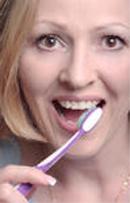|
|
"I had very good dentures once. Some magnificent gold work. It's the only form of jewelry a man can wear that women fully appreciate." Graham Greene |
Understanding dental procedures
|
|

Most people know that the teeth are the hardest and strongest part of the body. There's more than meets the eye, though. Teeth are actually a living part of your body that has blood vessels and nerves. If you used to judge your teeth like a book by its cover, then you're in for one big surprise. Teeth anatomy is a lot more complicated than you ever thought. Throughout your life you end up having 2 completely different sets of teeth. The initial set is the baby teeth (deciduous teeth) that eventually fall out. They are whiter, softer, and less sturdy than adult teeth. Hence, they tend to wear out much faster than permanent teeth, but they also fall out to make room for them. Making sure that there's enough space in the vacancy caused by a lost baby tooth is important for healthy adult teeth. Your teeth are by far one of the most important things you use every day. Many people end up neglecting their teeth with improper oral hygiene. You should take care of them by brushing at least twice a day, flossing once per day, and going for regular dental checkups at least twice per year. As we age, many of us find ourselves with teeth that are no longer structurally sound. Root canals, lost fillings, decay below a filling, chipping and cracking of the enamel are all things that can lead to large scale defects in a tooth's surface. When the entire surface of the tooth is a problem, but the root system is intact, a crown might be just what the dentist orders. Grinding your teeth, an improper bite, age, fillings and tooth decay can all be contributing factors in the wearing down, cracking or breakage of your teeth. Dental crowns cover the entire visible surface of your affected tooth and add strength, durability and tooth stability. In other instances, crowns are used to replace a actual missing tooth. These crowns are anchored to the teeth on either side, with a bridge section connecting the two crowns. Instead of bridges, single tooth dental implants may be used that eliminate the need for supporting the crowns. Be sure to discuss with your cosmetic dentist that the cement color used for your permanent crown will be the same as used for your temporary crown. A try in paste is used for this purpose. The color of the cement does affect the overall color of a porcelain crown, so this needs to be discussed long before your temporary crown is placed. Your cosmetic dentist will prepare your teeth on either side of the space for the false tooth. You will be given a mild anesthetic to numb the area, and the cosmetic dentist will remove the an area of each abutment (teeth on either side of the space) to accommodate for the thickness of the crown. When these teeth already have fillings, part of the filling may be left in place to help as a foundation for the crown. The dentist will then make an impression, which will serve as the model from which the bridge, false tooth and crowns will be made by a dental laboratory. A temporary bridge will be placed for you to wear while your bridge is being made until your next visit. This temporary bridge will serve to protect your teeth and gums. Your cosmetic dentist may have you use a Flipper appliance. A Flipper is a false tooth to temporarily take the place of a missing tooth before the permanent bridge is placed. A Flipper can be attached via either a wire or a plastic piece that fits in the roof of your mouth. Flippers are meant to be a temporary solution while awaiting the permanent bridge. Teeth straightening is accomplished with a number of different procedures and is usually done on children and adolescents when their permanent teeth begin growing in. Crooked teeth, crowded teeth, and even overbites and underbites can be treated with various teeth straightening techniques. While considered a cosmetic procedure, some people require teeth straightening in order for their teeth to be aligned in such a way that chewing is possible. Severe overbites and underbites can result in serious consequences over time, and even overly crowded teeth can mean health problems for the mouth. Invisalign is one of the newest methods of teeth straightening and is extremely popular with adults. Consisting of a clear mold that is nearly invisible when worn, Invisalign uses a series of molds that gradually push the teeth into the desired shape. Invisalign does not cost significantly more than standard orthodontic braces, but cannot correct an overbite or underbite and is only a good choice for minor straightening. Invisalign is not as effective on major problems, which may require standard braces. Some tenderness and soreness is to be expected with any method of teeth straightening, especially soon after an adjustment is made. The bone on one side of each tooth socket will be compressed, and the other side must be filled in with new bone as the tooth moves through the jaw. Standard orthodontic braces may cause superficial irritation to the interior of the mouth, a symptom that can be reduced with salt water gargles and a soft wax on the surface of the brackets. Severe side effects to teeth straightening are nearly unheard of, and the process is considered very safe. Dentures are removable replacements for missing teeth typically made out of an acrylic resin which at times incorporate porcelain or metal for additional structural support. There are two main types of dentures. Both Complete Dentures and Partial Dentures are finely crafted, custom-fitted. If you properly maintain your dentures they will appear natural and provide a perfect smile. Additionally, dentures help strengthen muscles controlling your expressions that require the support of your teeth, rid you of pronunciation problems caused by missing teeth and aid with chewing. If you've lost, or are losing, all of your teeth a Complete Denture is something to discuss with your cosmetic dentist. If some of your teeth remain and are healthy, a partial denture may be your way to a great smile. There are many different causes that lead to stained or discolored teeth. Some of the most common causes are everyday foods and drinks--coffee, tea, soda, and red wine all have a staining effect on tooth enamel. Smoking will also darken teeth. Some medications, if taken during early childhood, can result in teeth that are discolored. The simplest type of teeth whitening is the use of products that can be picked up from the drugstore. These products, which use a very mild bleaching solution, usually require extended use over a period of several weeks. They may be brushed on, squeezed into one-size-fits-all trays, applied as strips, or used in conjunction with normal toothpaste and mouthwash. While these products are very popular, their mildness makes them less effective. Dentists are able to provide much more dramatic teeth whitening. Some patients opt for a take-home kit that provides results in a few days, while others choose a one-hour procedure that uses advanced technologies to immediately bleach teeth several shades lighter. Take-home kits usually involve custom-fit trays with a whitening gel of carbamide peroxide, to be worn for several hours at a time over some number of weeks as determined by the dentist. These kits are usually less expensive than the one-visit whitening procedures. Mild side effects are to be expected with any teeth whitening procedure, and may range from slight discomfort to sensitivity to hot and cold. While serious side effects are extremely rare, any extended sensations of pain should immediately be reported to a dentist. Irritation to the gums and mouth tissues should also be watched for and reported if persistent. Tooth reshaping, or contouring, is one of few instant treatments now available in cosmetic dentistry. Dental reshaping and contouring is a procedure to correct crooked teeth, chipped teeth, cracked teeth or even overlapping teeth in just one session. The dental contouring procedure can even be a substitute for braces under certain circumstances. It is also a procedure of subtle changes. A few millimeters of reduction and a few millimeters of tooth-colored laminate can create a beautiful smile when performed by a cosmetic dentist, with no discomfort to you. Tooth reshaping, or dental contouring, is commonly used to alter the length, shape or position of your teeth. The cosmetic dentist will mark your teeth with a pencil prior to performing the procedure. This helps the cosmetic dentist in their sculpting process. As your cosmetic dentist sculpts the tooth, imperfections are artfully eliminating or minimized. A sanding drill or laser may be used to remove small amounts of surface enamel gradually. Abrasive strips are then moved back and forth between your teeth to shape the actual sides of your teeth. Then the teeth are smoothed and polished. Usually anesthetic is not needed. Teeth contouring and reshaping usually takes one to three visits.
Definitions used on this pageStomatology Tooth bleaching Understanding modern dental health and dental clinic advanced abilities
|
|
Information in this document about Dental care named Understanding dental procedures is for End User's use only and may not be sold, redistributed or otherwise used for commercial purposes. The information is an educational aid only. It is not intended as medical advice for individual conditions or treatments of Dental care. Additionally, the manufacture and distribution of herbal substances are not regulated now in the United States, and no quality standards currently exist like brand name medicine and generic medicine. Talk about Dental care to your doctor, nurse or pharmacist before following any medical regimen to see if it is safe and effective for you. © Copyright 2007 World Education Society, Dental care office. |
